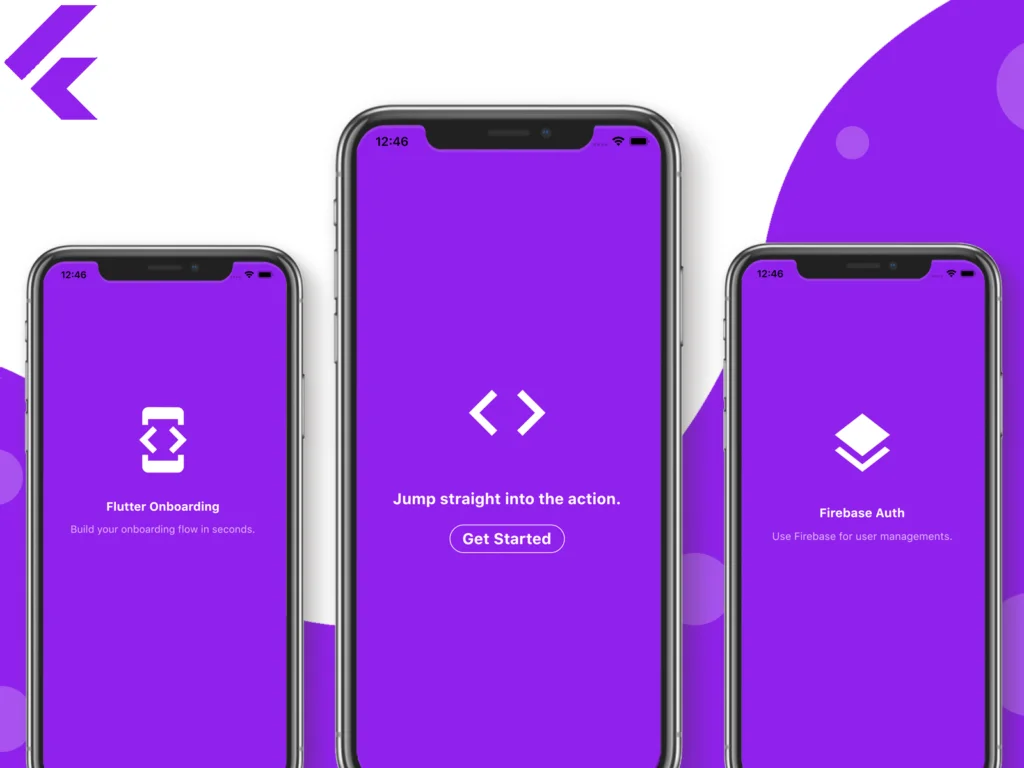How I Created a Flutter App in 24 Hours for a Hackathon
Hackathons are exciting events where developers come together to create innovative solutions within a limited timeframe. In this blog post, I will share my experience of participating in a hackathon and creating a Flutter app from scratch in just 24 hours. Join me as I walk you through the process, challenges, and lessons learned during this exhilarating coding adventure.

Choosing the Idea
The first step in any hackathon is to brainstorm and select an idea that aligns with the event’s theme and requirements. I started by exploring different problem areas and considering potential solutions. Once I had a few ideas in mind, I evaluated their feasibility, market potential, and my own interest. Eventually, I settled on an app idea that aimed to simplify task management for busy professionals.
Planning and Design
With the idea in place, it was crucial to create a rough plan outlining the app’s features, user interface, and data flow. I sketched wireframes on paper and refined them using design tools like Adobe XD. This step helped me visualize the app’s structure, user interactions, and overall user experience.
Setting up the Development Environment
Since I chose Flutter, an open-source UI software development kit, I needed to set up my development environment. I installed Flutter SDK, Android Studio, and the necessary dependencies. This step took some time, but once everything was set up correctly, I was ready to start coding.
Coding the App
I divided the app development into logical components and started coding each feature incrementally. Flutter’s hot reload feature allowed me to make changes in real time and see them reflected immediately. I leveraged Flutter’s rich widget library to create visually appealing UI elements and used Dart to implement the app’s logic. Throughout the process, I referred to Flutter’s extensive documentation and online resources to overcome any challenges or roadblocks I encountered.
Iterative Development
Given the time constraint, it was essential to prioritize features and focus on the core functionality of the app. I adopted an iterative development approach, constantly testing and refining each feature as I progressed. Regular testing helped me identify and fix bugs early on, ensuring a smoother experience during the final demo.
Integration and Backend
To make the app functional, I integrated it with necessary backend services, such as databases or APIs. I utilized Firebase, a mobile and web application development platform, for its real-time database and authentication features. This integration allowed me to store and retrieve user data securely.
Polishing the App
With the core functionality implemented, I shifted my attention towards polishing the app’s user interface, improving performance, and ensuring a seamless user experience. I paid attention to small details like animations, transitions, and error handling. Thorough testing on multiple devices and screen sizes helped me identify and resolve any compatibility issues.
Presentation and Pitching
The final step was to prepare a compelling presentation to showcase the app’s features, benefits, and potential impact. I created an engaging pitch deck, highlighting the problem statement, the solution I had developed, and the unique selling points of the app. I practiced my pitch multiple times to ensure a confident and effective delivery.
Collaboration and Teamwork
Hackathons are often team-based events, and collaborating with other developers can significantly boost productivity and idea generation. In my case, I had the opportunity to work with a diverse team, each member contributing their unique skills and perspectives. We divided tasks based on our strengths and collaborated closely throughout the development process, providing valuable feedback and support to one another.
Time Management
Time management is crucial in a hackathon, where every minute counts. To make the most of the limited time available, I created a schedule and allocated specific time slots for different tasks. By setting realistic goals and adhering to the schedule, I was able to stay focused and accomplish more within the given timeframe.
Prioritizing Features
Given the time constraint, it was essential to prioritize features based on their impact and feasibility. We identified the core functionalities that aligned with the app’s purpose and concentrated our efforts on implementing those first. This allowed us to have a functional app with essential features, even if we couldn’t include all our initial ideas.
Handling Challenges
Hackathons are known for their fast-paced and challenging nature. During the development process, we encountered various hurdles such as compatibility issues, unexpected bugs, and time constraints. However, we embraced these challenges as learning opportunities and used our problem-solving skills to overcome them. The key was to stay calm, think creatively, and leverage available resources, such as online forums and developer communities, to find solutions quickly.
User Testing and Feedback
To ensure the app’s usability and address any potential issues, we conducted user testing sessions during the development process. We invited individuals from different backgrounds to try out the app and provide feedback. This feedback helped us identify areas for improvement and make necessary adjustments to enhance the user experience.
Embracing Simplicity
Given the limited time available, it was crucial to keep the app’s design and functionality simple yet effective. We focused on delivering a streamlined user experience by eliminating unnecessary complexities and ensuring intuitive navigation. By embracing simplicity, we were able to create a more user-friendly app within a tight timeframe.
Learning and Growth
Participating in a hackathon and building a Flutter app in 24 hours was a tremendous learning experience. It allowed me to sharpen my technical skills, enhance my problem-solving abilities, and gain practical insights into app development. The pressure and time constraints of a hackathon fostered a growth mindset and pushed me to think creatively and innovate in a fast-paced environment.
Leveraging Flutter’s Community
One of the advantages of using Flutter is its robust and supportive community. During the hackathon, I actively engaged with the Flutter community through online forums, developer groups, and social media channels. Whenever I faced a roadblock or needed guidance, I reached out to the community for help. Their insights, suggestions, and code snippets proved invaluable in overcoming challenges and accelerating development.
Rapid Prototyping
In a time-constrained environment like a hackathon, rapid prototyping is essential. Instead of spending too much time perfecting each feature, I focused on creating functional prototypes that showcased the core functionalities. This approach allowed me to validate the app’s concept early on and gather user feedback, which guided subsequent development decisions.
Continuous Integration and Deployment
To ensure smooth collaboration within the team and streamline the deployment process, we set up continuous integration and deployment (CI/CD) pipelines. This enabled us to automatically build, test, and deploy the app at regular intervals, reducing manual effort and ensuring that everyone was working with the latest version of the code.
Embracing Agile Methodologies
To manage the development process effectively, we adopted agile methodologies such as Scrum or Kanban. These methodologies allowed us to break down the project into smaller tasks, prioritize them, and work iteratively. Regular stand-up meetings helped us stay aligned, address any roadblocks, and ensure that we were on track to meet our goals within the given timeframe.
Celebrating Milestones
Amidst the intensity of a hackathon, it’s crucial to celebrate milestones and achievements along the way. Every completed feature, resolved bug, or successful integration served as a motivation boost for the team. We took short breaks to acknowledge our progress, reflect on what we had accomplished, and recharge ourselves for the next challenges ahead.
Post-Hackathon Reflection
After the hackathon, it was essential to reflect on the experience and identify areas for improvement. We discussed what worked well and what could be done differently in future hackathons. By evaluating our strengths and weaknesses, we could refine our development process and enhance our skills for future endeavors.
Conclusion
Participating in a hackathon and creating a Flutter app in just 24 hours was an exhilarating and challenging experience. It required careful planning, efficient development, and a systematic approach to prioritize features. Despite the time constraints, the power of Flutter’s UI framework and its extensive community support enabled me to build a functional and visually appealing app.
This experience taught me the importance of teamwork, effective time management, and the ability to adapt and innovate within a limited timeframe. Hackathons provide a unique platform to test one’s skills, collaborate with like-minded developers, and push the boundaries of what can be achieved in a short period.
I encourage anyone passionate about coding and app development to participate in hackathons and embrace the challenge of creating something impactful within strict time constraints.
Remember, the key to success in a hackathon is to have a clear idea, plan efficiently, leverage the power of frameworks like Flutter, and focus on delivering a minimum viable product. With determination, creativity, and teamwork, you too can create an impressive Flutter app in just 24 hours. So, roll up your sleeves, join the next hackathon, and let your coding skills shine!


